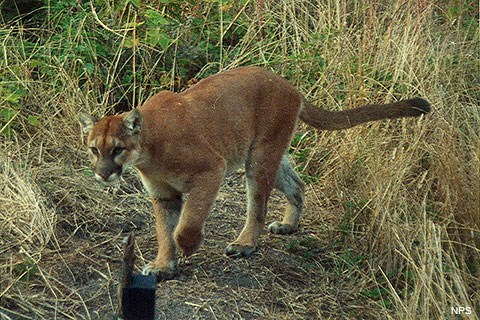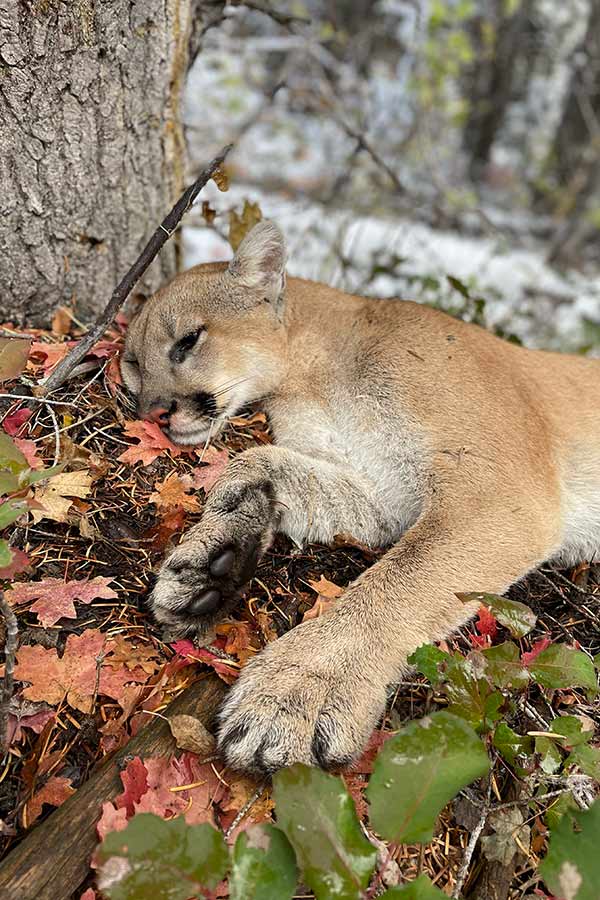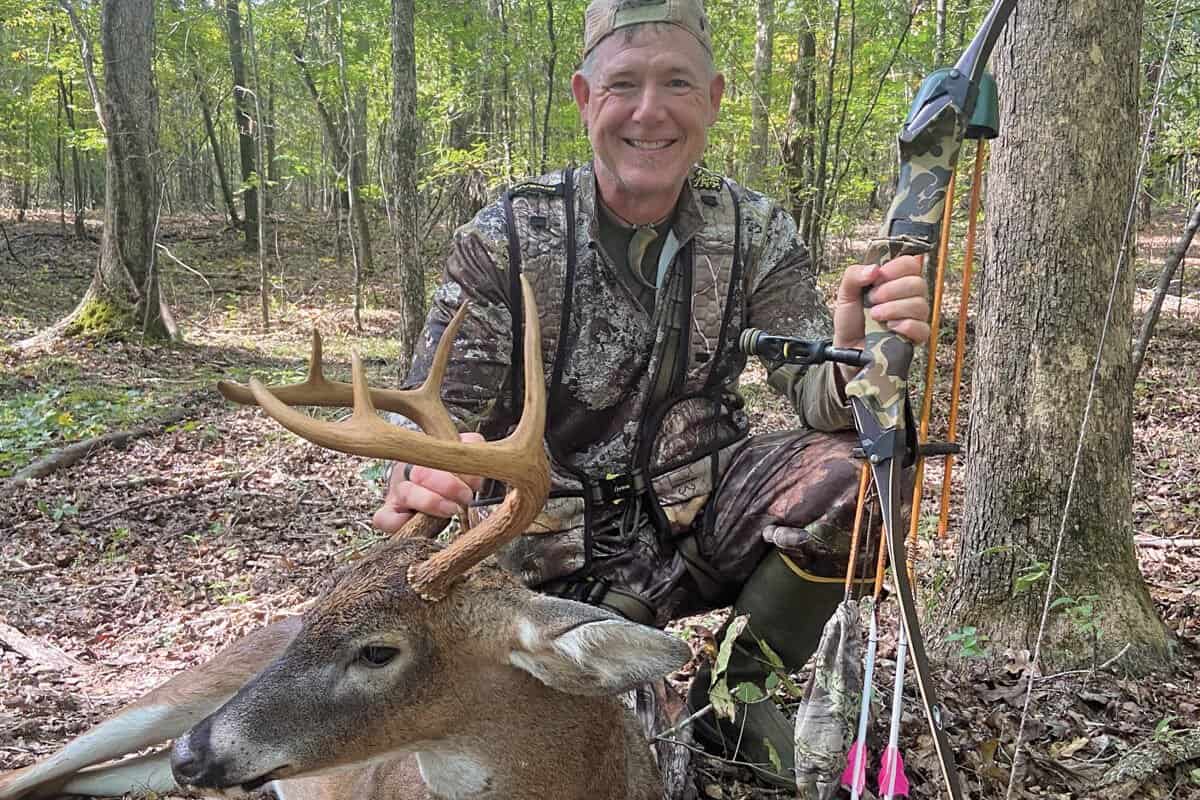Stop immediately and calmly back away, maintaining a respectful distance. Avoid making sudden movements or loud noises.
Encountering a deer can be both a thrilling and startling experience while out on a walk. Knowing what to do is crucial for the safety of both you and the animal. Deer are generally non-aggressive creatures, but they can become defensive if they feel threatened, especially if it’s a mother with fawns.
Wildlife enthusiasts often savor these moments, yet it’s important to remember that deer are wild animals, and close interaction with them can be unpredictable. The key is to preserve the natural behavior of deer and ensure a peaceful coexistence. By remaining still initially and then slowly backing away, you are demonstrating that you are not a predator, and you give the deer space to go on with its activities without undue stress. This approach not only protects local wildlife but also adheres to responsible wildlife watching practices.

Credit: www.nps.gov
Encountering Deer On Foot: Initial Reactions
Imagine quietly walking through the woods when suddenly, you spot a deer. It’s a serene moment, yet it’s crucial to know the right steps to ensure both your safety and the deer’s.
Stop And Assess The Situation
When you see a deer, the first thing to do is stop. Move slowly, if you must, to avoid startling it. Remain calm and quietly observe the deer’s behavior. Are there any signs of agitation?
Understanding Deer Behavior In Encounters
- Deer are generally peaceful, but they can be unpredictable.
- Ears back, stomping feet, or snorting indicate discomfort.
- If a deer approaches, don’t try to touch it. This trespasses on their personal space.
- Stay quiet and still, allowing the deer to continue its path peacefully.
- Keep distance, especially from fawns as mothers may be protective.
- Slowly back away if the deer doesn’t move on its own.
.png)
Credit: www.wildlifecenter.org
Safety Measures When Near Deer
Spotting a deer on a walk can be an enchanting experience. Ensuring safety adds to the enjoyment. When near these majestic creatures, key precautions are vital. Let’s explore how to stay safe while admiring deer.
Maintain A Safe Distance
Keeping distance is crucial. Deer are wild animals. No matter how calm they seem, staying back is essential for safety. A general guideline is at least 30 feet away. This space helps prevent startling the deer and keeps both parties safe.
If there’s a fawn, extra caution is necessary. Mothers can be protective. Always give them space. Never come between a mother and her baby.
Avoid Sudden Movements
Deer are sensitive to motion. Sudden moves can trigger their flight response. Remain calm and move slowly. Quick actions can scare them. This may lead to unpredictable behavior. If a deer approaches, stand still. This practice will often cause them to lose interest and move on.
| Do | Don’t |
|---|---|
| Stand still | Approach the deer |
| Walk away slowly | Make loud noises |
| Use sidewalks or trails | Feed the deer |
- Be aware of your surroundings.
- Keep pets on a leash and under control.
- Scan the area for signs of deer before proceeding.
Remember, a peaceful encounter with wildlife is possible. Respect their space, and enjoy the view from a distance.
Effective Strategies To Deter Deer
Stumbling upon a deer can be a serene moment. Yet, it’s essential to keep them at bay to avoid potential conflicts. Here are proven tactics to discourage these graceful creatures from approaching you during your walks.
Use Of Noise To Discourage Approach
Deers are sensitive to noise. Therefore, making sound can be an effective way to deter them. Carry a whistle or clap your hands to create a disturbance that encourages them to move away. An affordable option is a can filled with coins; shake it vigorously to send a clear message. This method ensures your safe passage while preserving the tranquility of their natural habitat.
- Whistles: Easy to carry and loud enough to alert deer.
- Hand Claps: Simple and immediate way to create a deterrent noise.
Implementing Visual Deterrents
Visual cues can effectively caution deers. Movement and unusual patterns can deter them from getting too close. Consider attaching bright-colored ribbons to your backpack or wear a high-visibility vest. Flashing lights or a quickly waved piece of clothing can make deer pause and reconsider their approach.
| Item | Effectiveness |
|---|---|
| High-visibility clothing | Excellent for standing out |
| Bright ribbons | Good for creating unusual patterns |
| Flashing lights | Effective during low light |
Remember, peaceful coexistence with wildlife ensures both safe outdoor experiences and the preservation of nature’s balance. Utilizing these strategies, you can enjoy your walking adventures and protect the majestic beauty of deer.
When Deer Behavior Escalates
Encountering a deer on a walk can be a tranquil experience. Yet, situations may arise where a deer’s behavior becomes unpredictable. Understanding these signs is crucial for safety. Below are essential insights and actions to take when deer behavior escalates.
Identifying Signs Of Aggression
Aggressive deer display distinct behaviors. Watch for these signs:
- Stomping hooves show irritation or a warning.
- Ears back can indicate agitation.
- Snorting is a clear aggressive signal.
- Antler thrashing against the ground is a pre-charge action.
- A fixed stare suggests the deer is assessing a threat.
Be aware of the rutting season, typically from October to December. Deer are more aggressive during this time.
| Behavior | Meaning |
|---|---|
| Stomping Hooves | Irritation/Warning |
| Ears Back | Agitation |
| Snorting | Aggressive Signal |
| Antler Thrashing | Pre-Charge Action |
| Fixed Stare | Assessing Threat |
Necessary Steps For De-escalation
If you notice aggressive signs, take steps to calm the situation:
- Stop moving and stay still.
- Avoid direct eye contact. It can be seen as a challenge.
- Slowly increase distance between you and the deer.
- Use a calm, assertive voice if you speak.
- Find a barrier like a tree or car for protection if needed.
Never approach a deer. They can feel threatened and react. Always give them space.
Protecting yourself and ensuring the deer’s safety should be your top priority. Recognize the warning signs and know how to respond accordingly.
Post-encounter Actions
Encountering a deer during a walk can be a mesmerizing experience. Yet, it’s crucial to know the right steps to take afterward. In this section, we’ll explore the actions you should consider post-encounter to ensure safety and preparedness for any future walks.
Reporting Unusual Deer Interactions
If a deer behaves oddly or aggressively, report this to local wildlife officials. Documenting these encounters helps track potential health issues among the deer population, such as chronic wasting disease (CWD). Here’s a quick guide for reporting your interaction:
- Contact local wildlife authorities immediately.
- Note the location, date, and time of the encounter.
- Describe the deer’s behavior in detail.
- Keep a safe distance while observing the deer.
Reviewing Best Practices For Future Walks
After an encounter, it’s beneficial to review safety tips for future walks. This list will serve as a quick reminder when you’re amidst nature:
- Stay alert and keep an eye on your surroundings.
- Walk with a companion when possible.
- Avoid feeding wildlife to prevent unnatural behavior.
- Keep a respectful distance from all animals.
- If a deer approaches, slowly back away to maintain space.
- Carry protection like a loud whistle or pepper spray.
Remember these points to enjoy safe and peaceful future walks in the great outdoors. The companionship of nature is precious; respecting wildlife is key to preserving that relationship.

Credit: wildlife.utah.gov
Frequently Asked Questions On What To Do If You Encounter A Deer While Walking
What Should I Do If I See A Deer?
If you encounter a deer, stay calm and avoid sudden movements. Slowly back away while keeping an eye on the animal. Never approach or attempt to touch it, as deer can become aggressive if they feel threatened.
Is It Safe To Feed A Wild Deer?
Feeding wild deer is not recommended. Human food can be harmful to deer, and feeding them can alter their natural behaviors and make them dependent on people for food.
How Can I Avoid Startling A Deer?
To avoid startling a deer, make steady, low noise to announce your presence. If hiking, talking or whistling softly can alert deer of your approach, reducing the chance of a sudden encounter.
Can Deer Be Aggressive To Humans?
Deer are typically not aggressive towards humans. However, mother deer can be protective of their fawns and bucks during the mating season can be more aggressive. It’s best to keep a respectful distance at all times.
Conclusion
Encountering a deer on a walk can be a serene moment, yet caution is key. Remember to stay calm, give it space, and enjoy the experience from a distance. Armed with these tips, you’re poised to coexist peacefully with nature’s gentle giants during your outdoor adventures.
Stay safe and keep exploring!

